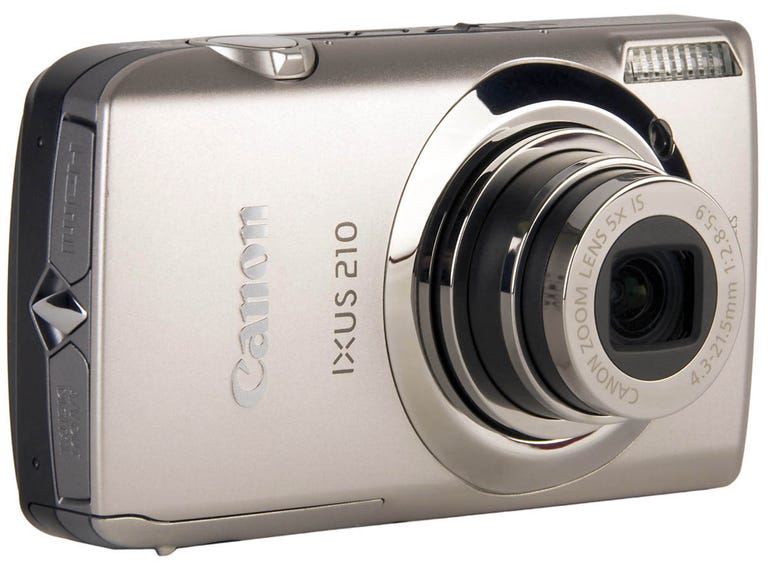 Why You Can Trust CNET
Why You Can Trust CNET Canon IXUS 210 review: Canon IXUS 210
The 14.1-megapixel IXUS 210 offers a sophisticated design and a bevy of 'smart' technologies that mean you can concentrate on taking snaps instead of constantly reading the manual. Its 5x zoom is useful too, and its touchscreen interface is excellent
The Canon IXUS 210's blend of style, sophistication and smart picture-taking technology should appeal to quality-conscious photographers who don't want to spend half their time with their noses in the manual. This 14.1-megapixel compact camera comes with a large touchscreen interface and a 5x zoom too, which is why you'll have to pay around £250 to get your hands on it.
The Good
The Bad
The Bottom Line
Smooth porker
The 210 offers Canon's traditional IXUS build quality. It's porky compared to some of the other models in the range, but its smooth contours mean it should still slip into your pocket quite easily.

The 210 is particularly versatile, thanks to its 5x, extra-wide-angle, 24-120mm zoom, and the 88mm (3.5-inch) touchscreen on the back looks especially smart. The display takes up the whole width of the camera, leaving no room for any knobs or buttons. It doesn't need them, though, making do with a simple slider switch on the top for choosing the movie, program-auto-exposure or full-auto-exposure modes.
The interface works very well. The 210 has a 16:9 display, which means there are black bars at the sides when you're shooting stills, but Canon's used these areas to house the touch-sensitive icons that adjust the camera settings. The size and 461,000-pixel resolution of the display mean that the image doesn't feel cramped. The display comes into its own when you're shooting 16:9, 720p, high-definition movies.
There are no new, headline-grabbing technologies in this camera, but what there is works well. The automatic scene-selection mode chooses from no fewer than 22 different scene types, whereas most other cameras use just a handful of the most common. The 'smart flash' control does a good job of balancing flash with daylight in outdoor portraits, for example, and the 'touch autofocus' lets you select any point in the frame for focusing, and then follows the subject if it or the camera moves.
Mushy pictures
This camera certainly has some weaknesses, however. The quality of its HD movies is fine but you can't zoom while filming, unless you use the digital zoom, which ruins the picture quality.
The worst shortcoming, though, is the 5x lens, or the processing system, or both. Coarse, high-contrast outlines look fine, but subtler details are often blurred into a kind of milky mush. A large part of the problem is Canon's attempt to cram 14.1 megapixels into a 1/2.3-inch sensor.
The lens makes this problem even worse, softening up badly towards the edges of the picture and displaying the kind of chromatic aberration you might expect in a budget camera -- not one that costs as much as the 210. The 210's lack of any really killer features wouldn't be a problem if you just wanted a good-quality pocket camera, but its disappointing picture quality means you don't even get that.
Conclusion
The IXUS 210 is a very poor effort from Canon. It's pleasing to look at and use, but, when you pay this kind of money for a prestige camera, you expect much better picture quality than the 210 offers. Canon should stop chasing megapixels and take a proper look at image quality instead.
Edited by Charles Kloet
